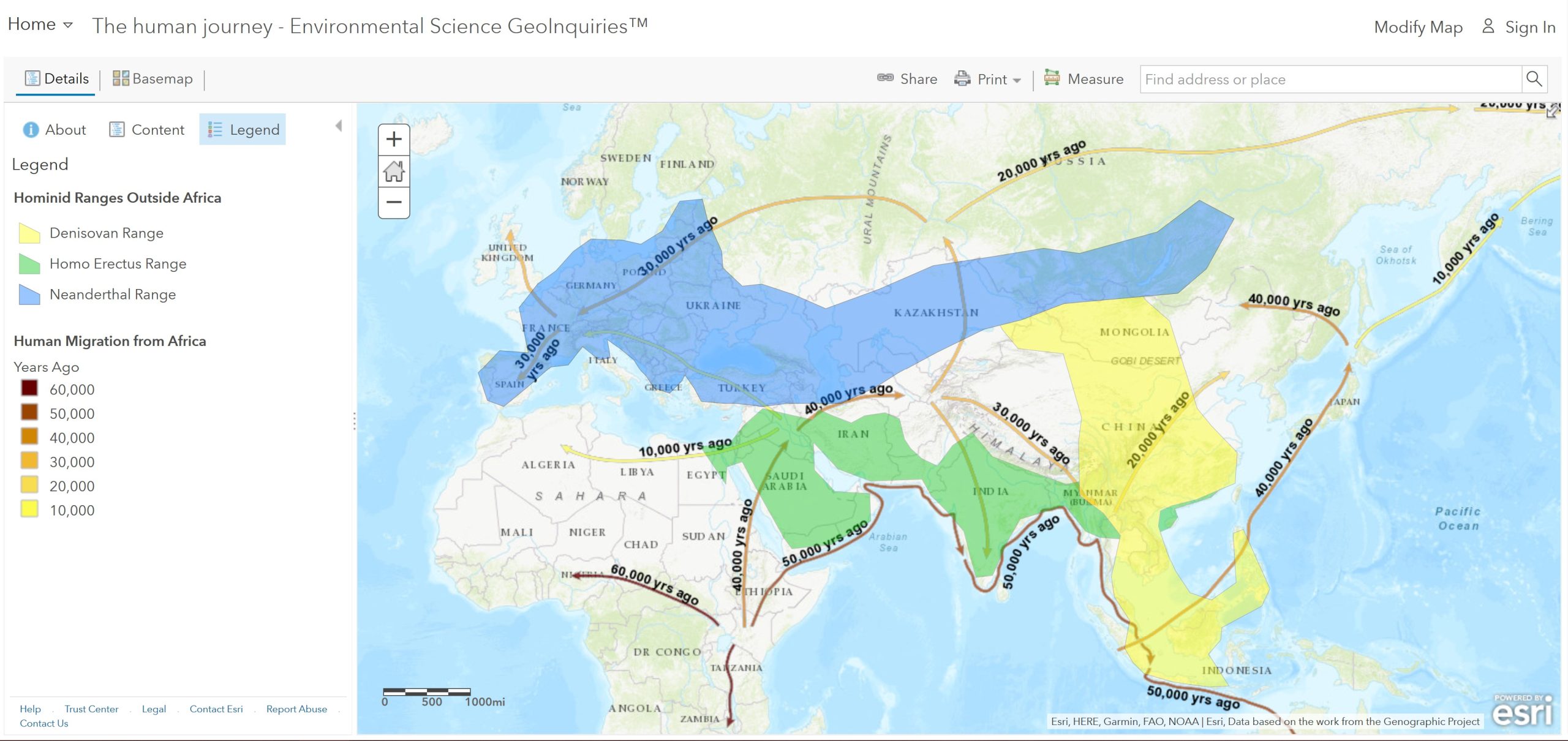
Engage: How did humans come to dominate the planet?
Post Darwin’s “On the Origin of Species,” scientists worked to put organisms into classes. First attempts to organize humans sought continental similarities between people.
Step 1: Go to the ArcGIS Online map, The Human The Human Journey and explore the map.
Step 2: With the Details pane visible, click the button, Show Contents of Map.
Step 3: Click the map notes near each of the continents.
- What traits could be used to differentiate people from different continents?
- What has been happening to these distinctions over the past 200 years?
Step 4: Turn off the layer, Continental people Groups.
Explore: What do blood-type distributions tell us?
Blood types, discovered in 1901, predict who can share blood without clotting and killing the recipient. Within 20 years, A, B, and O patterns were determined globally.
Step 5: Turn three layers on and off as needed for the following question: Type O Blood Distribution, Type A Blood Distribution, Type B Blood Distribution.
- What blood type is the most prevalent?
- Would this give evidence to which blood type was the founder and others the mutations?
Explain: How did blood get us closer to the heart of the matter?
- What patterns occur in blood types?
- Where is Type A blood likely to be found?
- Could any of these areas be explained by recent historical migrations of A blood types moving in?
Elaborate: Why do those living in the Americas have such similar blood types?
Mitochondrial DNA mutates at rates higher than DNA from the cell nucleus. This leaves recognizable patterns in how long populations have been separated.
Step 6: Turn on the layers, Human Migration from Africa and Austronesian Expansion.
- What might explain why Native Americans have such an overwhelming prevalence of O blood types?
